What is Keyword Density?
Keyword density is the frequency with which a keyword appears on a webpage relative to the total word count.
Represented as a percentage, it’s calculated by dividing the number of times a keyword appears on a page by the total word count and multiplying the result by 100:
Does Keyword Density Matter for SEO?
Keyword density is no longer an important ranking factor.
When SEO was still an emerging field, the idea was that more keywords created more relevance and resulted in higher rankings.
Many SEO professionals focused on keyword density as a metric to improve their rankings. They would overload their content with target keywords to boost search rankings.
This is a practice known as keyword stuffing, where keywords are a case of quantity over quality.
Using keywords in this way now violates Google webmaster guidelines, which state:
Keyword stuffing refers to the practice of filling a webpage with keywords or numbers in an attempt to manipulate rankings in Google Search results. Often these keywords appear in a list or group, unnaturally, or out of context.
As a result, keyword frequency or density on its own is no longer a key to SEO success.
Search engines are much more sophisticated today. Google and others have evolved to understand the content on a webpage beyond keyword density.
Google’s John Mueller confirmed this by responding to a question on Reddit about keyword density in 2021. The user asked directly if keyword density is a ranking factor.
“no,” Mueller replied. (That’s all he wrote.)
This also aligns with similar statements ****** far back as a Google Webmaster office-hours video in 2014:
“Keyword density in general is something that I wouldn’t focus on. Make sure your content is written naturally. Humans, when they visit your website, are not going to count the natural occurrences of each word. Search engines have moved on from there over the years as well…”
For this reason, keyword stuffing is considered bad SEO practice that results in a poor user experience. The On Page SEO Checker can help you identify content-related SEO issues.
Google Algorithm Updates and Keyword Density
Google algorithm updates over the years have changed SEO and the relative importance of keyword density.
Google continually updates its algorithm to improve user query results and discourage practices like keyword stuffing.
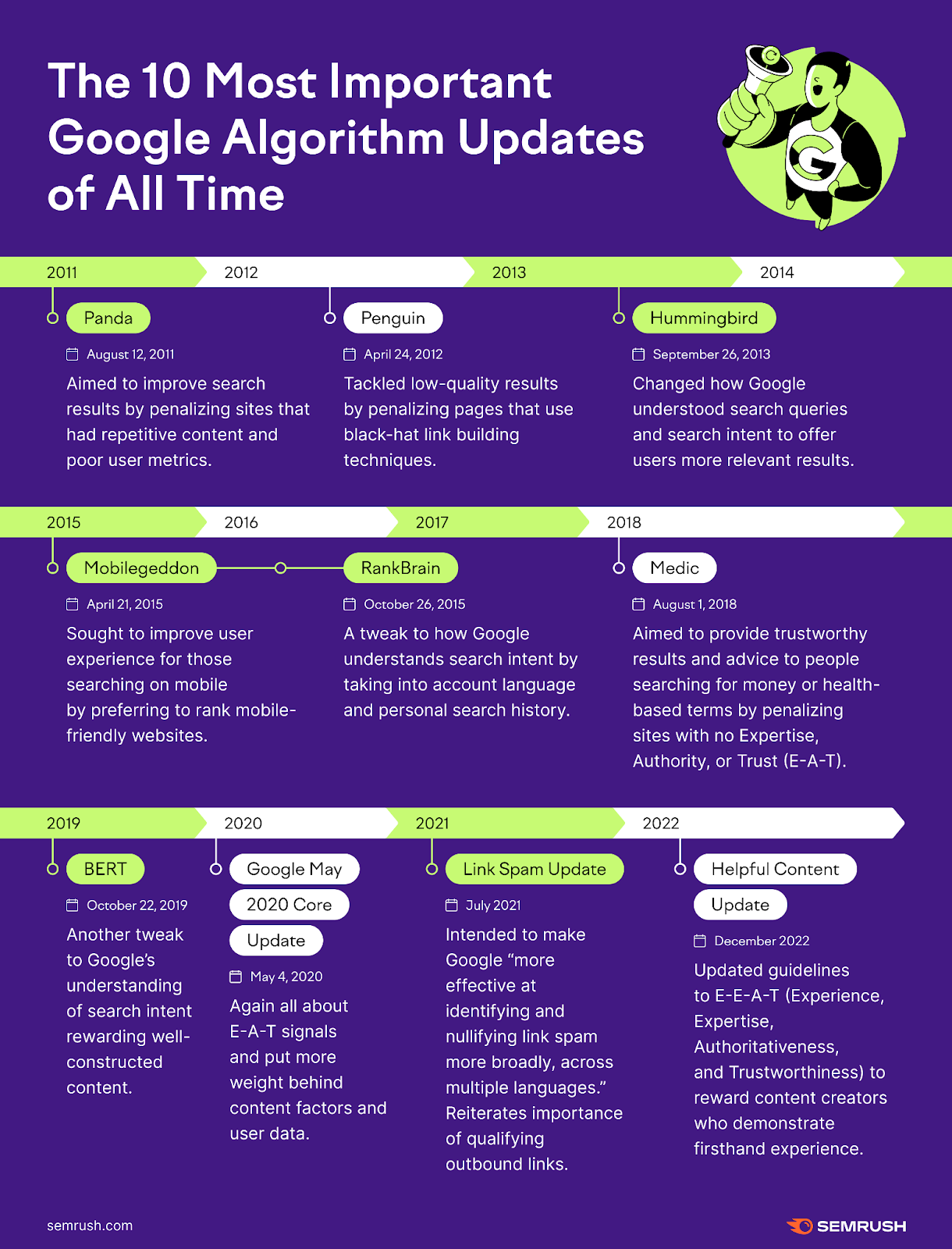
Panda
One of the most important early Google algorithm updates was called “Panda.” Released in 2011, Panda was designed to target websites with thin or duplicate content.
These included websites with little or no relevant content or valuable information for users and sites with content copied from other sites.
The Panda update affected about 11.8% of search queries. Websites with excessive advertising were impacted, as were sites that published large quantities of low-quality webpages to make money without providing much value.
In terms of keyword density, the Panda update indicated that Google was more interested in websites that provided valuable content to their users. Those that used keyword stuffing to artificially inflate their rankings were less valuable.
This marked a shift away from keyword density as a primary ranking factor and toward the overall quality of the content of a webpage.
Google confirmed this in a 2011 post about the Panda update, stating:
Our advice for publishers continues to be to focus on delivering the best possible user experience on your websites and not to focus too much on what they think are Google’s current ranking algorithms or signals.
Hummingbird
Another important update was Hummingbird, released in 2013.
This algorithm update looked at the query as a whole, rather than the individual words within it. Thus began the shift from keyword optimization to search intent.
For example, if someone searched for “smartphones near me,” Hummingbird took that to mean the user was searching for brick-and-mortar stores near them that sold smartphones. (Not websites that used “smartphones near me” in their title tag.)
The Hummingbird algorithm update was designed to handle more complex search queries. It focused on understanding the context of the words in a query to determine what users were looking for.
Hummingbird made Google’s algorithm more precise by matching a user’s query to webpages that matched their search intent. In an FAQ with Search Engine Journal, Google said that Hummingbird focused on the “meaning behind words.”
This update moved Google’s algorithm and SEO best practices even further away from keyword density. Google was now “translating” each query behind the scenes.
The overall quality of the content was more important. Particularly how well it matched the user’s search intent.
Now a core focus in modern SEO, search intent is broken down into four general categories: navigational, informational, commercial investigation, and transactional.
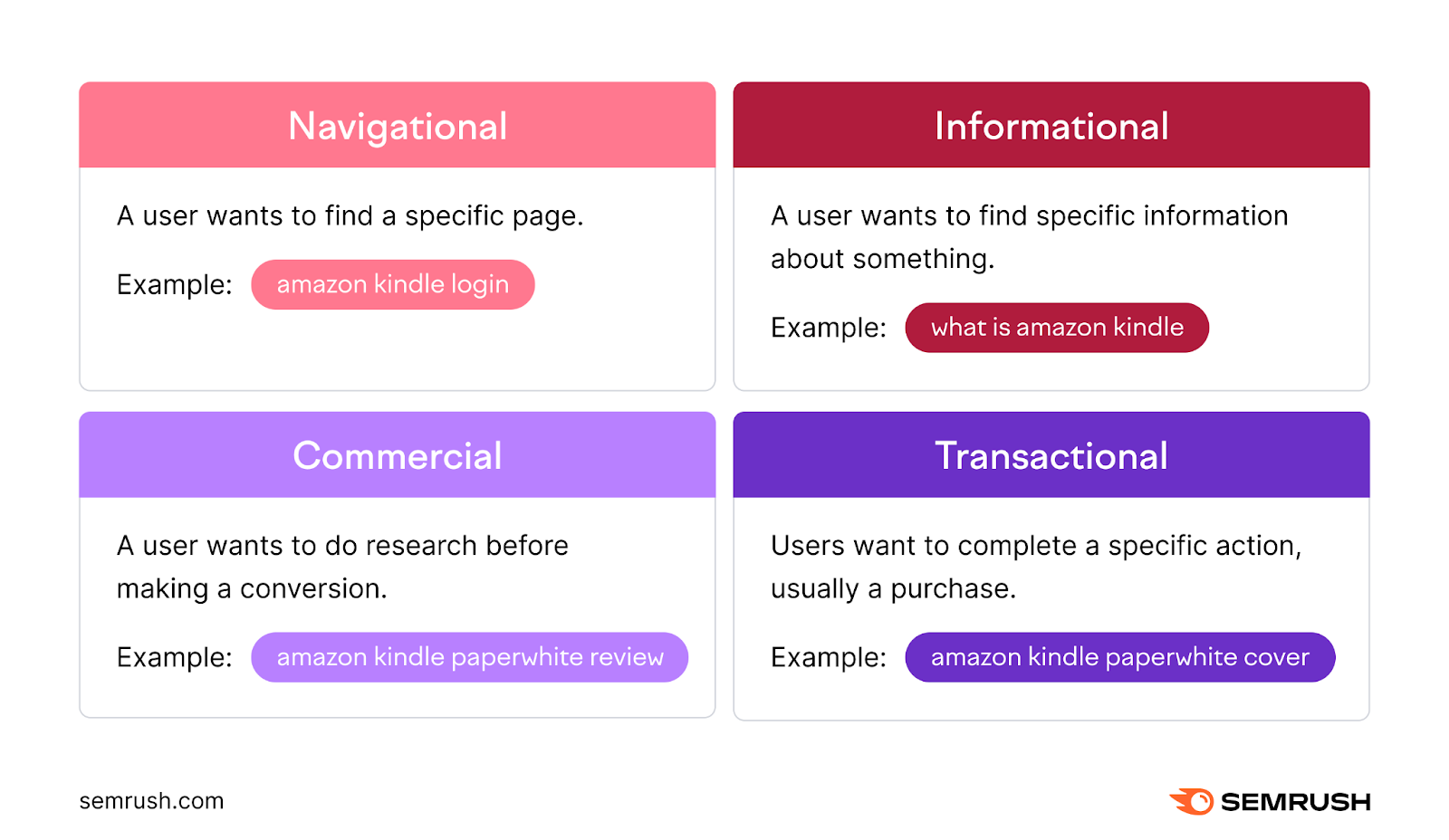
RankBrain
Then there’s RankBrain, introduced in 2015.
RankBrain uses a machine learning-based algorithm to understand the meaning behind search intent. It looks at the meaning behind a query, rather than just the words in the query itself.
RankBrain works by “translating” relevant keywords into entities.
Entities are things.
“Guitars,” “drums,” and “rock music” are entities.
RankBrain puts entities into related groups. If RankBrain sees a word or phrase it doesn’t understand, it can infer the meaning of the keyword based on the associated entities.
Entities are connected by the Google Knowledge Graph. It’s like a mind map of all the known and related entities Google has discovered.
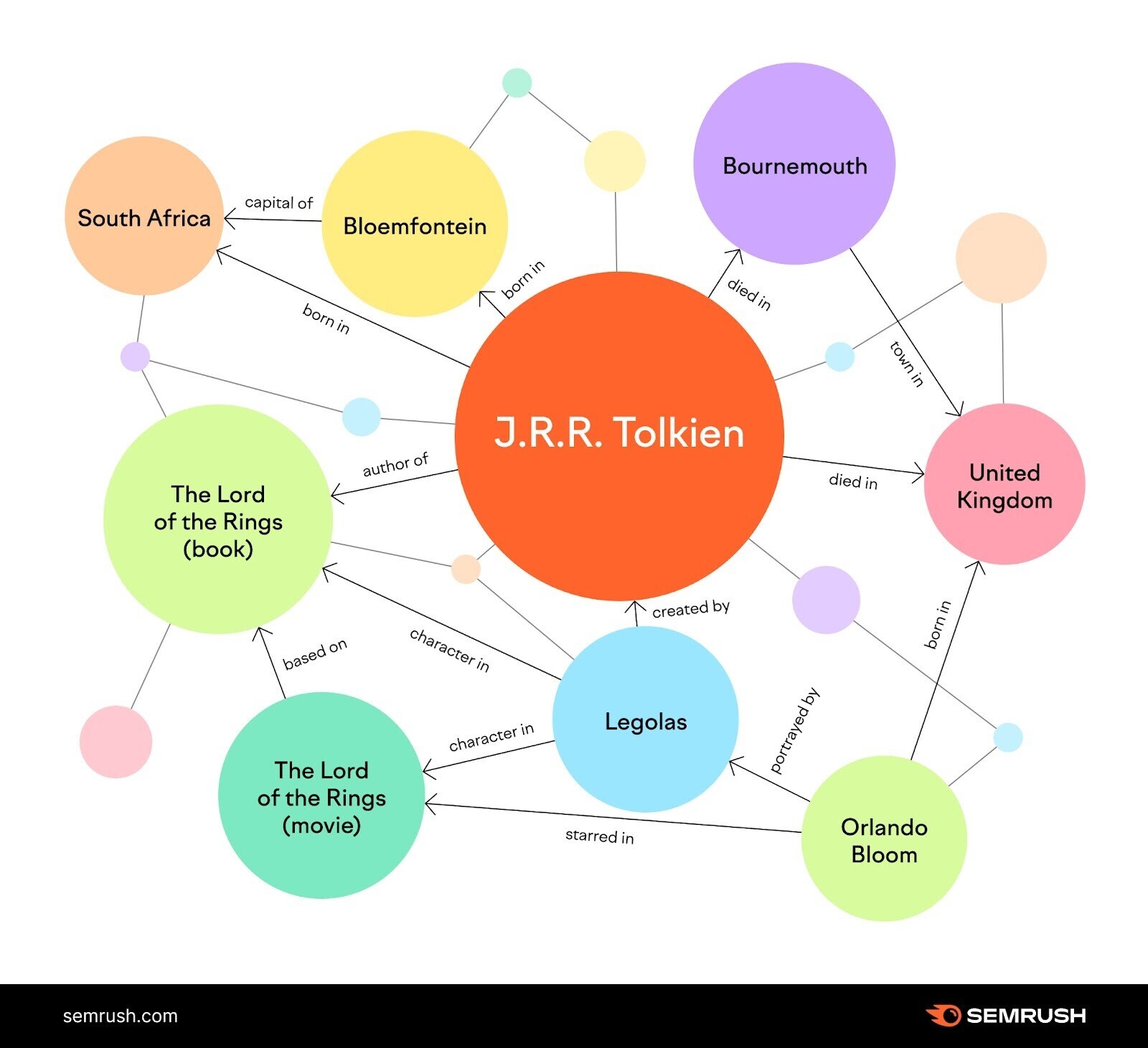
Once again, keyword density—and keywords in general—took a back seat.
Context and search intent (what the user is expecting to find) took precedence.
RankBrain’s ability to understand the intent of a query changes how search works. Now, relevant pages are ranked for a keyword, even if the content on the pages doesn’t contain the exact keywords used.
From Keyword Density to Keyword Relevance
Search intent and context outweigh keyword density as important SEO factors.
Ranking high in Google is not about using a keyword more often, but how, where, and why you use the keyword and other associated terms or entities.
Don’t cram your content with target keywords wherever possible. Use them in a way that makes sense in the natural flow of your content.
Well-written content should include relevant keywords in a way that is natural and useful to the reader. This is more valuable (and more likely to rank) than a page that repeatedly uses the same keyword in an attempt to increase keyword density.
You want to include your keyword in places like the title tag and H1 tag of the page. And you want the content to follow a logical structure and hierarchy that includes related entities or subtopics as section headings.
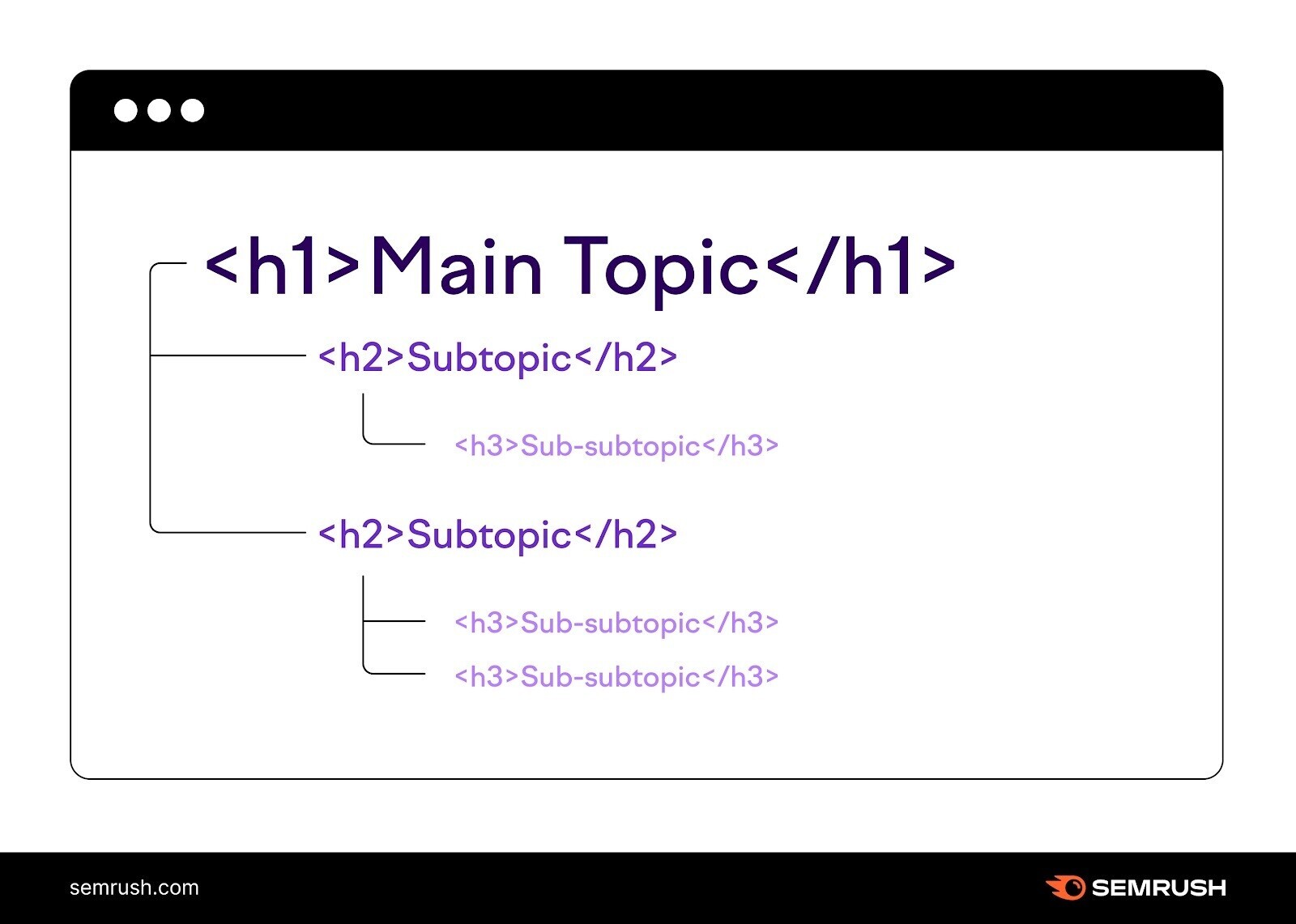
Beyond that, relevant keywords will generally appear naturally throughout the content.
For instance, if you’re writing an article about “how to bake blueberry muffins,” that article would include many mentions of the terms “blueberry muffins” and “bake.” Even if you didn’t try to “optimize” it for those terms.
It might even have the entire phrase, “how to make blueberry muffins.”
Plus, it would mention other relevant topics or entities like oven, heat, flour, and sugar.
Google looks at all of these factors to determine if your content is relevant and of high enough quality to appear in search engine results pages (SERPs).
If your article repeats “how to make blueberry muffins” 1,000 times in a row, it’s obviously not high-quality content.
Pro tip: Use the Semrush Position Tracking tool to monitor your SERP rankings and adjust your content strategy to improve them.
Semantic Search and Search Intent: Using Keywords Naturally and Contextually
People use different words to search for the same information. Therefore, avoid targeting a single keyword for your content.
For example, if someone wants to learn about different types of wine, they might search for “types of wine.”
They may also search for “wine types.”
Or maybe “wine varieties.”
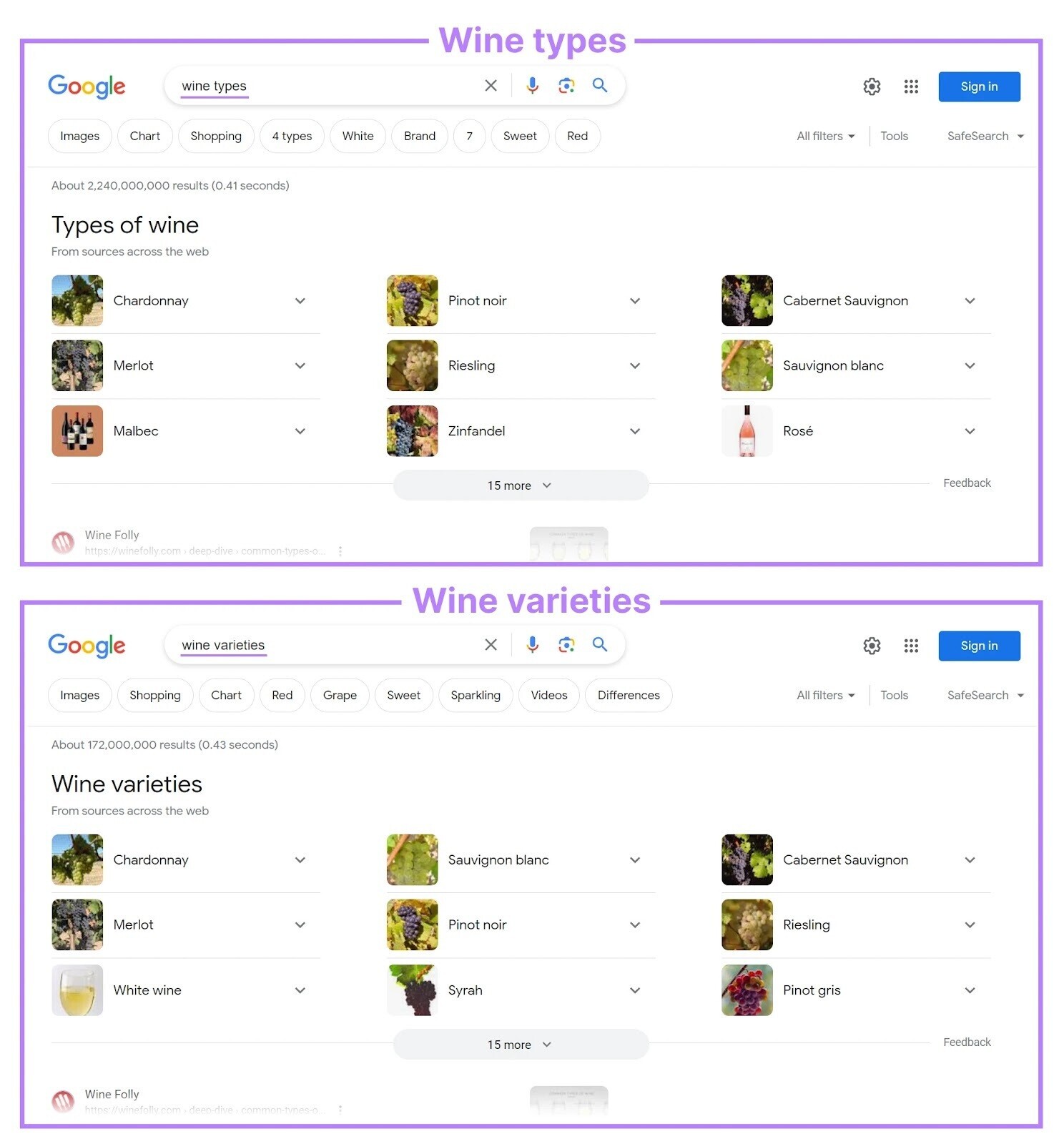
Search engines have to understand that someone typing in these different keywords are actually looking for the same information.
How?
Semantic search.
Semantic search analyzes the relationships between entities. We defined them earlier as “things,” but entities can also be people, places, and concepts. Google uses semantic search to understand relationships between entities and user intent.
Google core algorithm updates like Hummingbird and RankBrain have become much better at understanding how users search. They also help Google understand why they’re searching.
This helps the algorithms return pages that contain information users want.
For example, when ranking pages for “types of wine,” they might look for pages that have words like “cabernet,” “pinot noir,” and “sauvignon blanc.”
Google might interpret these related terms or entities as good search results for the user.
Google uses its Knowledge Graph, introduced in 2012, to help with this. Knowledge Graph categorizes entities to give users speedy and accurate search results using information panels. The knowledge graph has categorized 500 billion entities.
Here’s how they explain it:

This means that, as a content creator, your page shouldn’t just include target keywords. Words and phrases related to that topic should also be used.
Create comprehensive content that covers the topic completely. Focus less on an arbitrary quota for how many times you use the term “types of wine.”
When you optimize your content for a target keyword, ask yourself:
- Why is my audience searching for this?
- What information are they trying to learn?
- What problem are they trying to solve?
- What other information can I include that might help them?
Using the Keyword Overview tool, you can quickly get a sense for some of this information.
From the Semrush dashboard, click “Keyword Overview.” Type your target keyword in the text box and click “Search.”
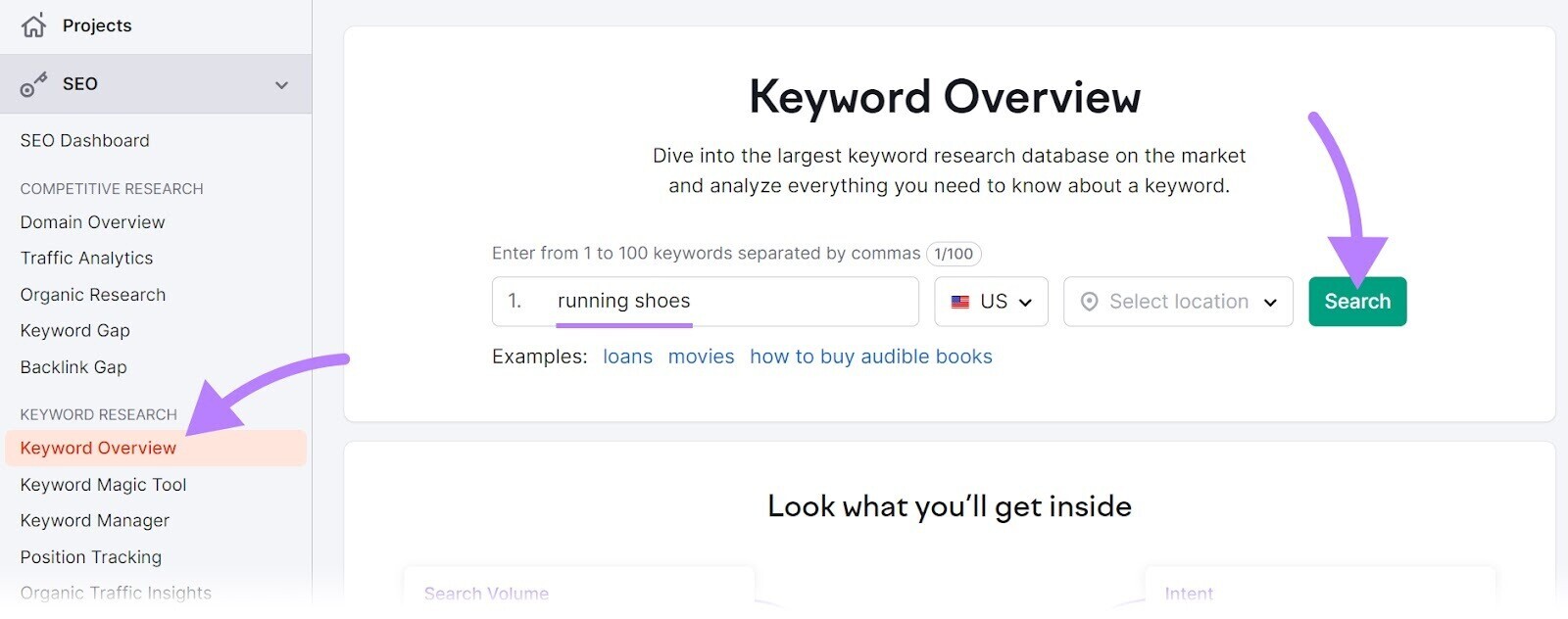
The Keyword Overview report will provide you with insights about the keyword you’re targeting. The “Intent” section will indicate the keyword’s primary search intent.
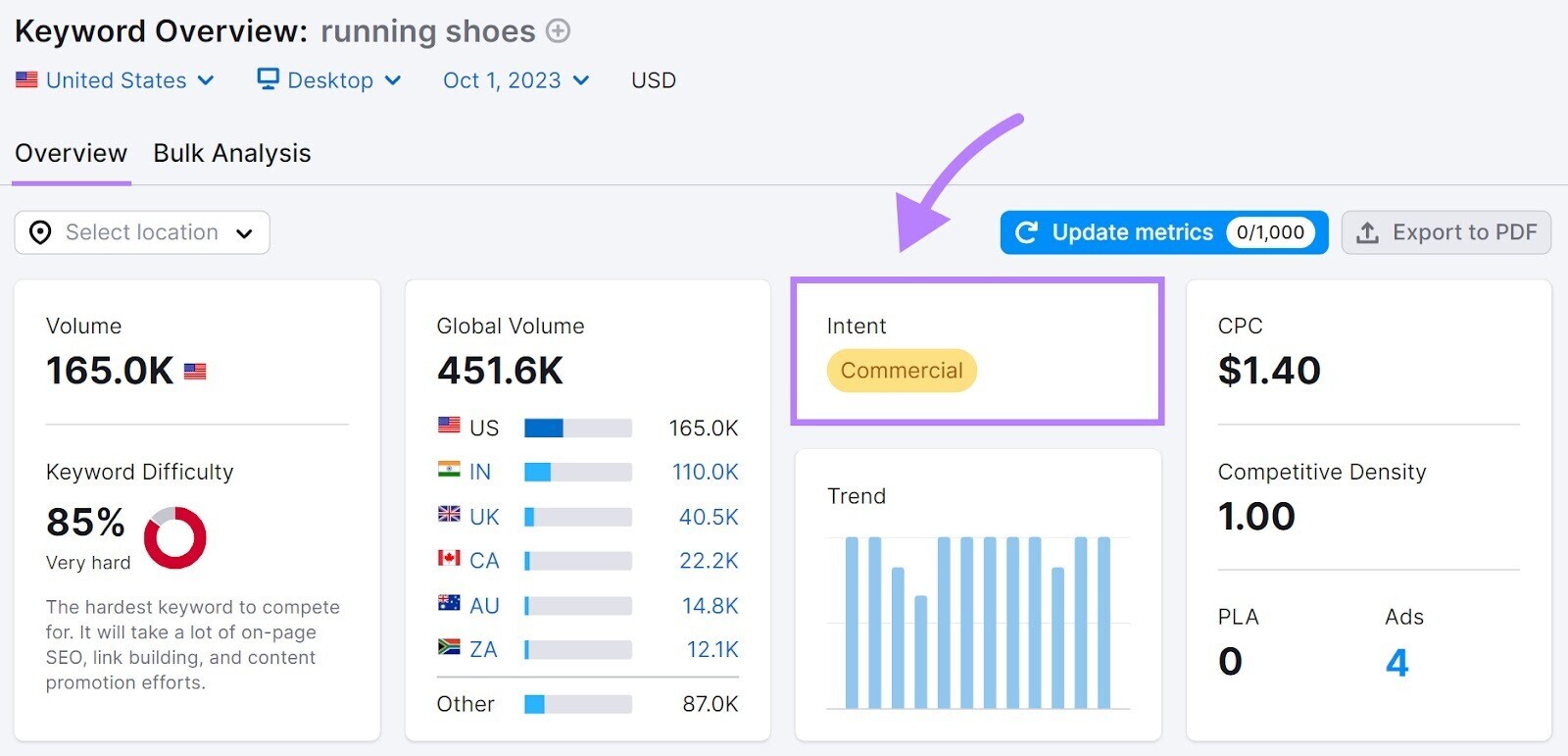
You can use this information to match the content you’re creating with the user’s expectations and goals when conducting the search.
It also provides a list of keywords and questions associated with the query under “Keyword ideas.”
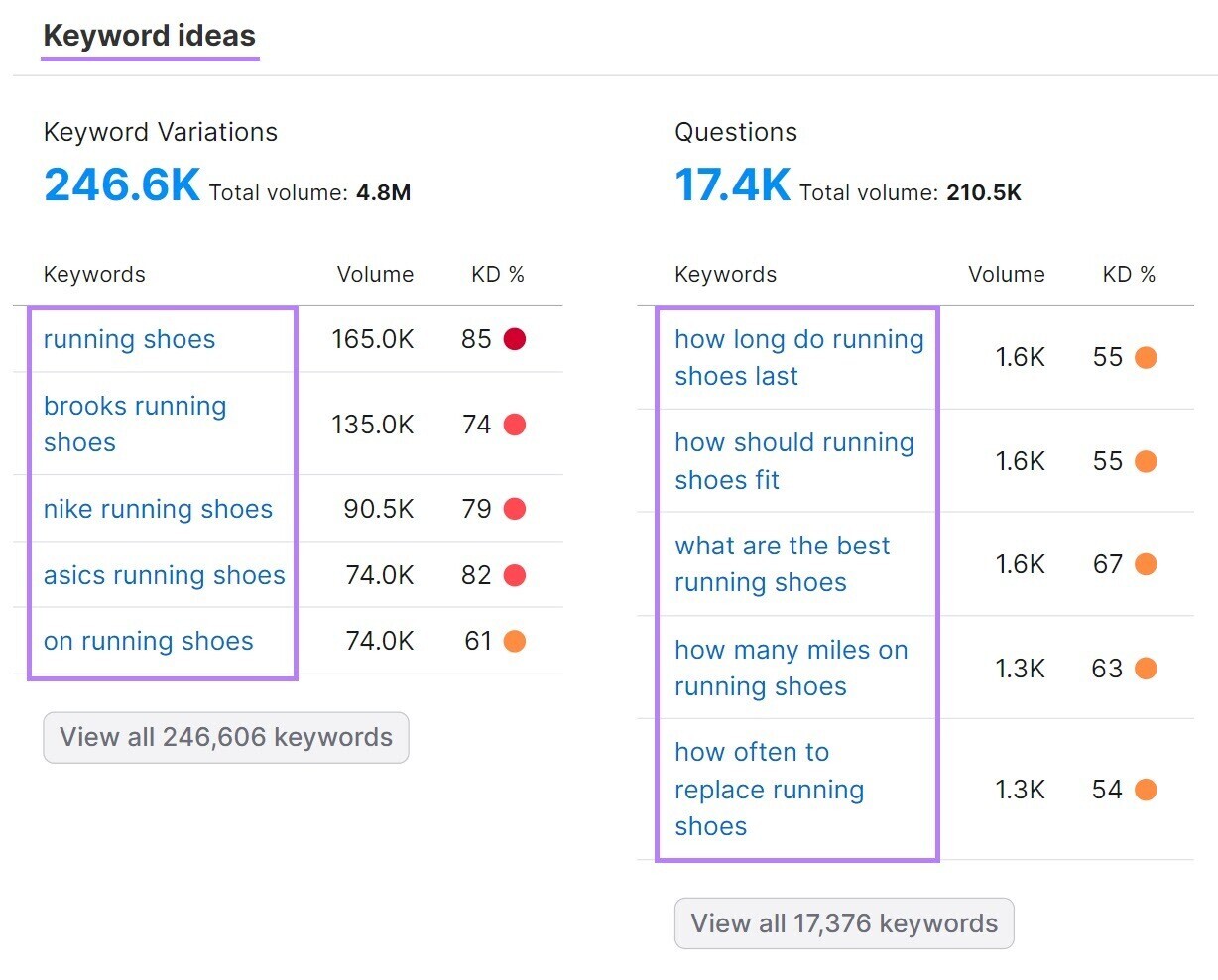
You can use this information to add additional depth to your content or address key questions your visitors may have.
Finally, you can analyze the SERPs to get a sense of what other pages already rank for this keyword. Just scroll down to the “SERP Analysis” section.
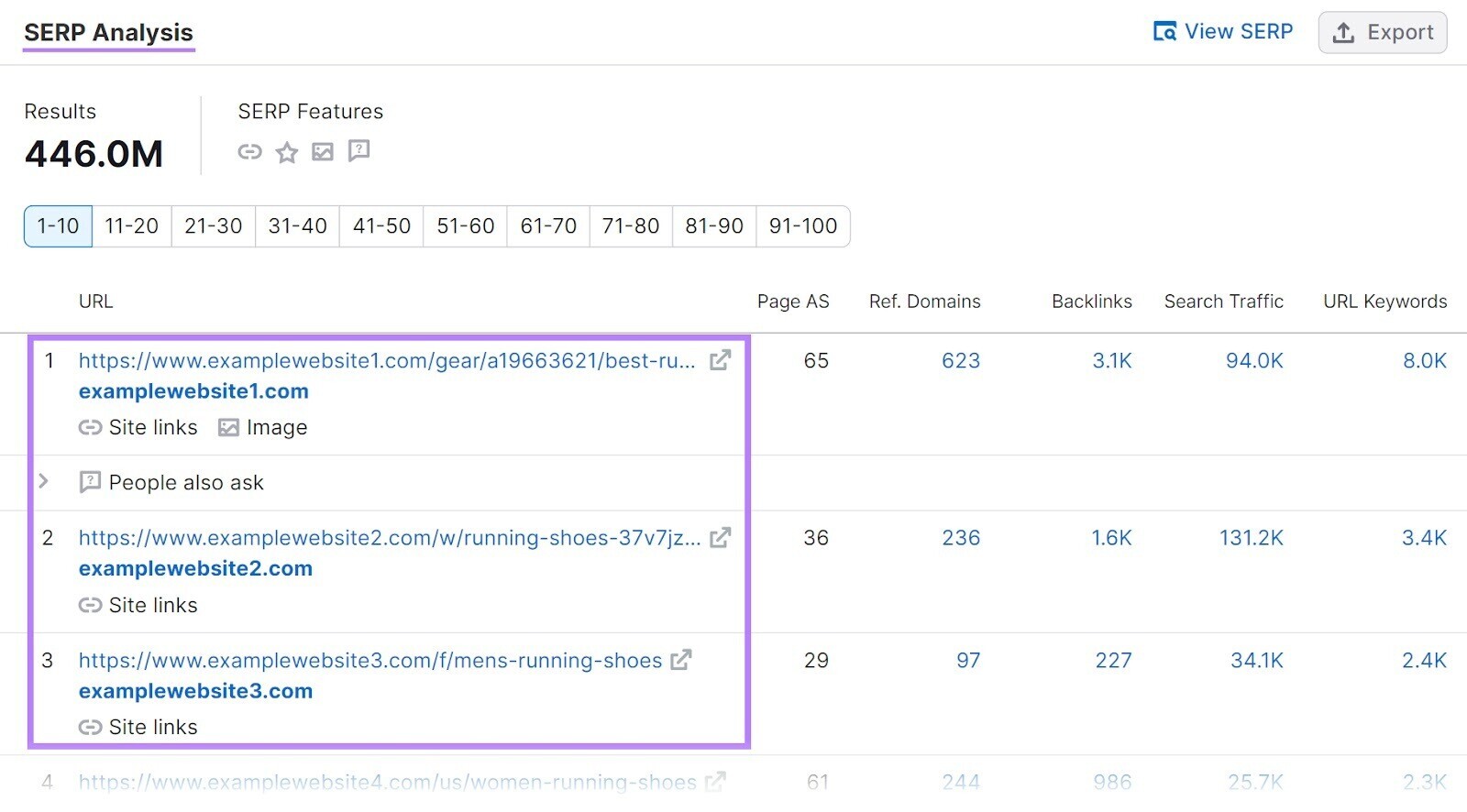
Using these insights, you can get a better sense for how to craft content to cover the topic and optimize for semantic search, without resorting to keyword stuffing.
The Keyword Density Myth
Keyword density should not be a core focus of your SEO strategy.
Simply using a target keyword multiple times in your content will not improve your chances of ranking. This is an outdated practice rooted in SEO strategies that no longer work.
Google has confirmed that keyword density is not a significant SEO ranking factor. It has discouraged this focus for years. Matt Cutts, the former Head of Web Spam at Google, stated that there is no ideal keyword density.

He said clearly, “that’s not the way that search engine rankings work.”
So why has this misplaced idea stuck around all this time?
Old habits die hard.
SEO specialists learned to count on it as a core part of their strategy. Plus, some SEO tools still use it as a core metric in reporting, which perpetuates this outdated thinking.
But, Google’s algorithms have evolved to recognize keyword stuffing and other ineffective SEO tactics.
They can hurt more than they help.
Keyword stuffing could get your pages flagged as spam. They could drop in rankings. You could even be deindexed from Google entirely.
Modern Keyword Best Practices
Keywords are still important because they relate to entities and semantic search.
Search engines use the language and context of your content to understand what the webpage is about.
For example, you might expect the keyword—or a very similar phrase—to appear in the page title in the search results. (Otherwise, how would you know the page has the information you want?)
You might also expect to see it in some of the subheadings within that article.
It’s considered best practice to include target keywords strategically within your content rather than focus on term frequency.
On-page SEO includes strategic placement of target keywords. Add keywords in a way that’s helpful to your target audience so that they better understand the topic of the content.
This helps search engines, too.
Here are some places to consider adding keywords for SEO.
1. Title Tag
The title tag is one of the most effective places you can put your target keyword.
Your page’s title tag is the first thing that users and search engines will see when they come across your page. The title tag should have a relevant keyword near the beginning to make it immediately clear what the page is about.
It looks like this:
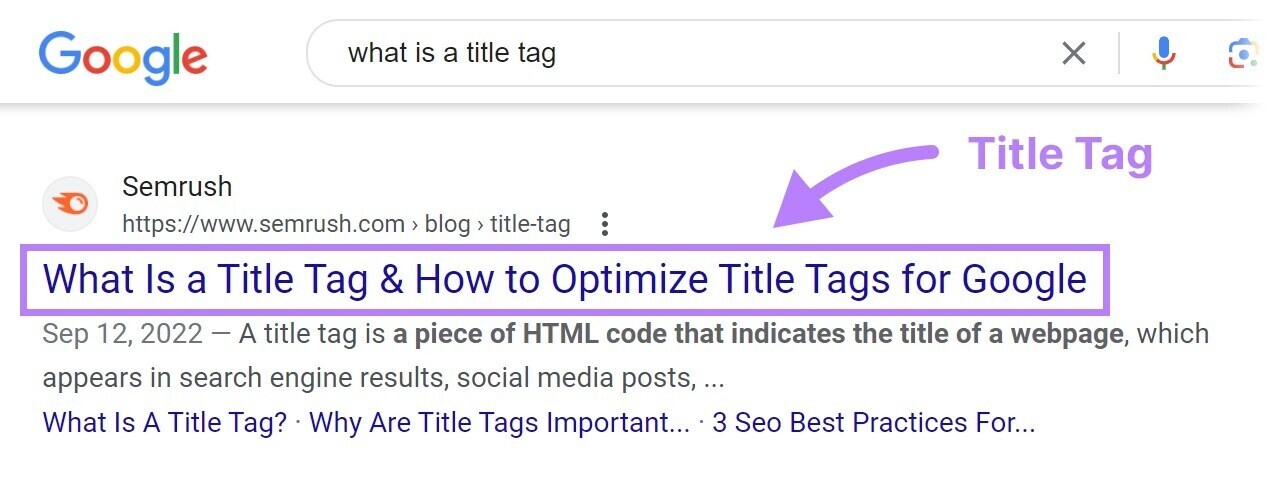
2. URL or Slug
Your page URL should include your target keyword.
This tells users what they’ll get from visiting the page. It also gives additional context to search engines when they crawl and index it.
Avoid using underscores (_) or common stop words like “and” or “in.”
URLs like this are not optimized:

Something clear and legible (and including the target keyword) works better:

Note: John Mueller says that optimizing your URLs to include a target keyword is also a “very, very lightweight ranking factor.”
But he still recommends writing them primarily for humans.
3. Headings
Using your keyword in heading tags (e.g., H1, H2, and H3) helps users and search engines understand the logical flow and structure of your content. Use the keyword only where it feels natural and relevant in context.
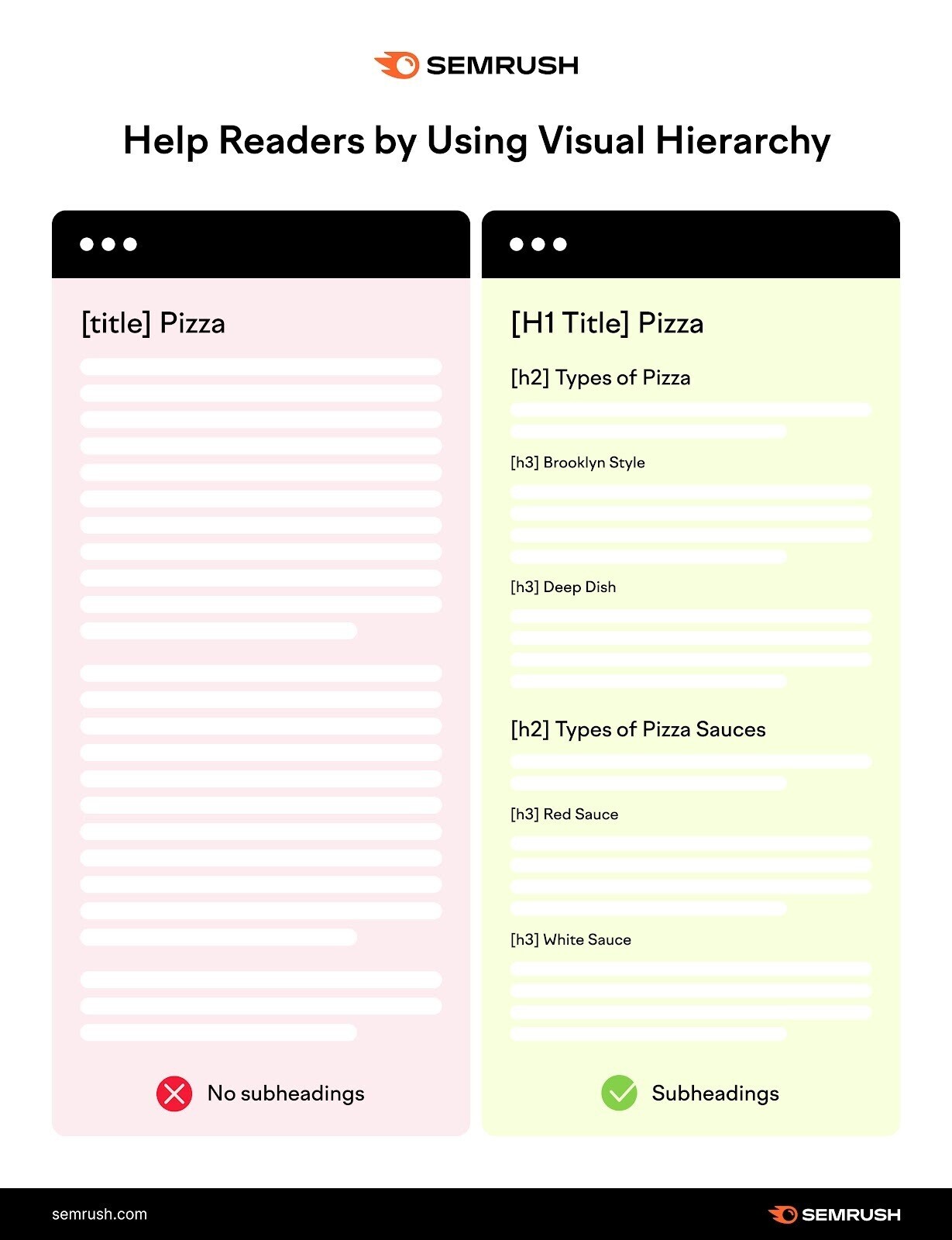
This structure and hierarchy helps search engines understand the content and relationships between topics on your page.
It’s also great for users.
Logical structure helps readers skim, understand, and get the information they need.
4. Meta Description
The meta description is the short blurb underneath your page title in the SERPs.
The meta description doesn’t directly affect your rankings, but a keyword here gives users context and information. They might be more likely to visit your page. And improve your click-through rate (CTR) from Google search results.
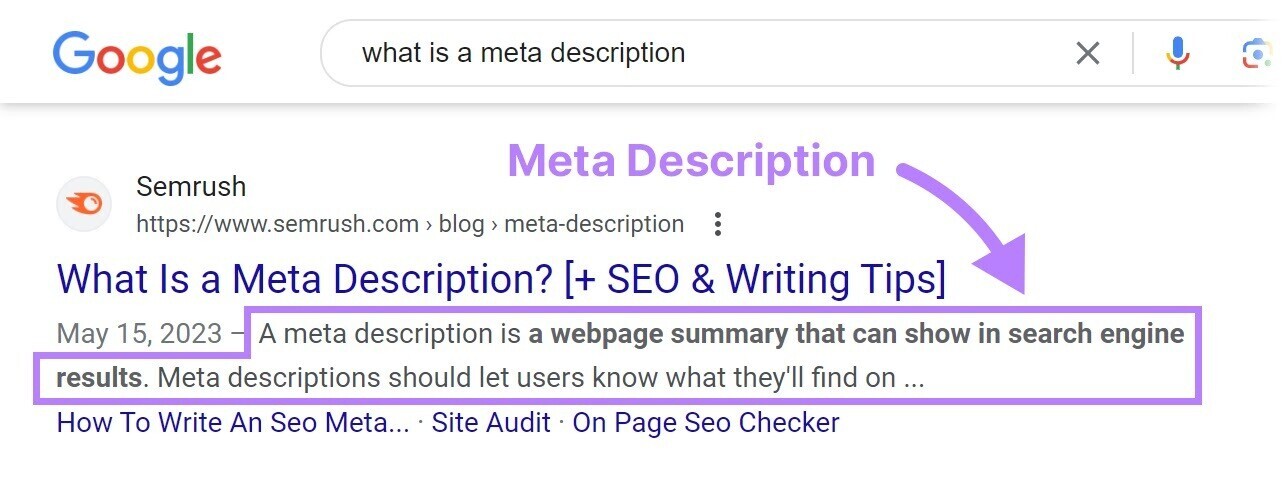
For example, a good meta description for your page about “organic coffee” might read:
“Explore our wide selection of organic coffee beans and learn about the benefits of organic coffee.”
5. Body
Relevant keywords should appear naturally throughout your page.
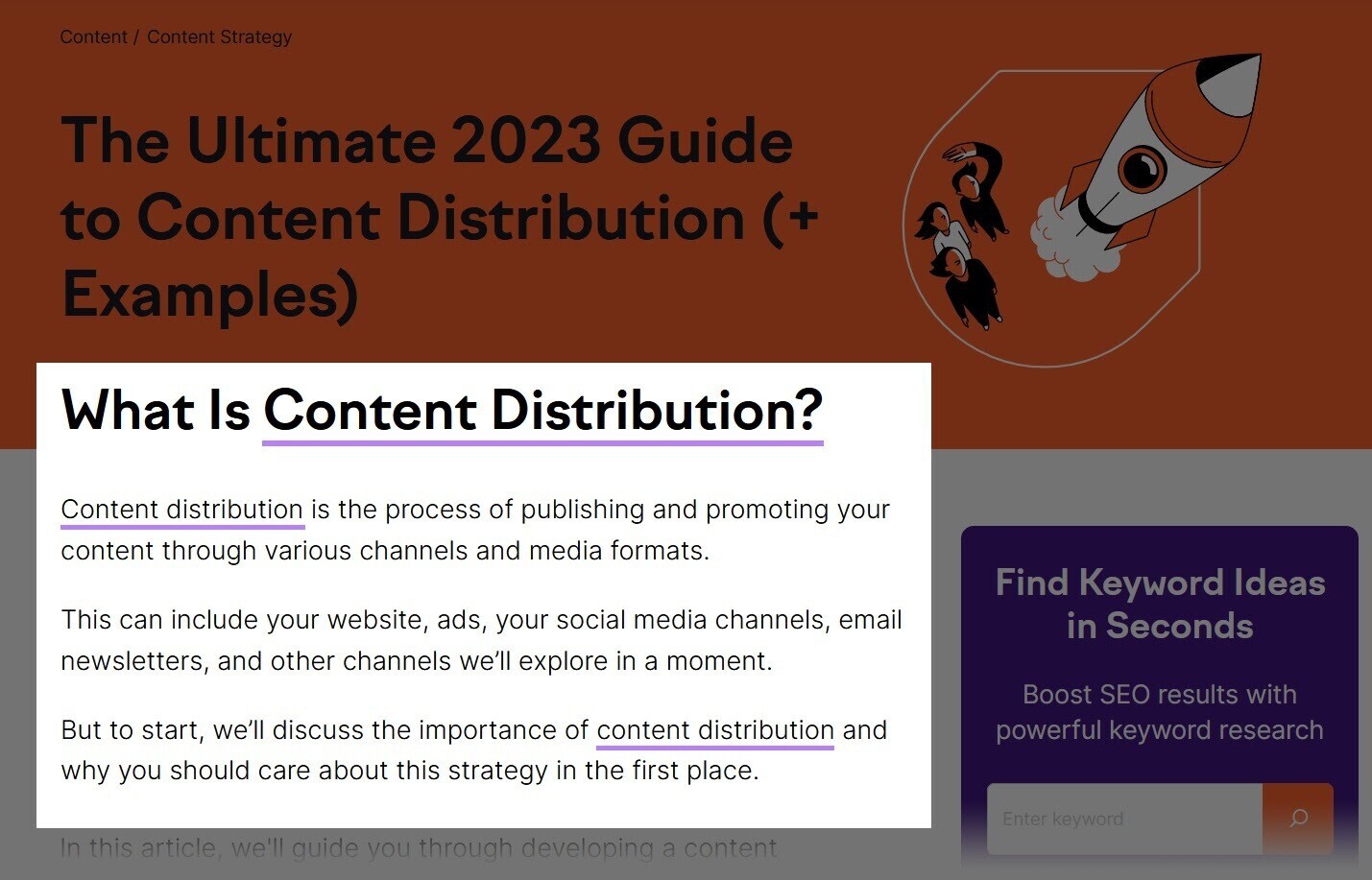
If you find yourself rewriting content to include the target keyword more often (and not to enhance clarity), this is usually a bad sign.
Still, it’s common SEO practice to use your target keyword within the first 100 to 150 words of your content. Many people believe that this has a positive impact on SEO.
More importantly, it shows your users that they’ll find the information they need.
For example, you might start your page about organic coffee with an opening sentence like, “Organic coffee is becoming more popular because of its health benefits and eco-friendly growing practices.”
Remember, on-page SEO is just one part of your overall SEO strategy. You should always focus on creating high-quality, well-written content that provides value to your user, first and foremost.
FAQs About Keyword Density
Does Keyword Density Matter for SEO?
Keyword density is no longer a significant ranking factor.
Search engines today focus more on the relevance of content to match user search intent. They also consider the context in which keywords are used along with other relevant topics and phrases.
What is Keyword Stuffing? Is It Bad?
Keyword stuffing is when you overuse keywords in your content to try to manipulate your ranking in search results. It used to be common in SEO, but now it can lead to a drop in search rankings or, in extreme cases, get your content removed from Google’s index.
Where Should I Place Keywords in My Content?
Using your keywords strategically within your content tells Google what your webpage is about. It also makes your content easier to find and read.
Some good places to include keywords are in the title tag, meta description, URL, first 100-150 words of your content, and at least one subheading.
Will Increasing Keyword Density Improve My Search Rankings?
No, using keywords more frequently will not improve your webpage’s search rankings. Google prioritizes high-quality, relevant content that matches search intent and provides value. Use keywords naturally—in a way that makes sense in the context of your content.
Is There an Ideal Keyword Density for SEO?
No, there is no ideal target keyword density for SEO. Search engines like Google prioritize relevance and quality of the content rather than keyword frequency.
Source link : Semrush.com
